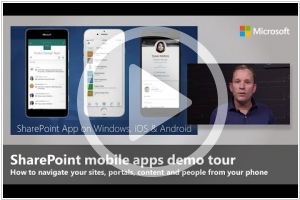Alfresco vs SharePoint
May 17, 2023 | Author: Michael Stromann
17
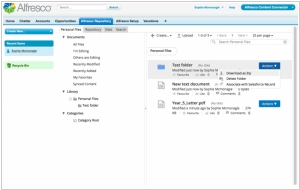
Alfresco is a Free enterprise content management system for Microsoft Windows and Unix-like operating systems. Alfresco includes a content repository, an out-of-the-box web portal framework for managing and using standard portal content, a CIFS interface that provides file system compatibility on Microsoft Windows and Unix-like operating systems, a web content management system capable of virtualizing webapps and static sites via Apache Tomcat, Lucene indexing, and Activiti workflow. The Alfresco system is developed using Java technology.
59

SharePoint's multi-purpose platform allows for managing and provisioning of intranet portals, extranets and websites, document management and file management, collaboration spaces, social networking tools, enterprise search, business intelligence tooling, process/information integration, and third-party developed solutions. SharePoint can also be used as a web application development platform.
Alfresco and SharePoint are both enterprise content management (ECM) platforms, but they have distinct differences in their features and approach. Alfresco is an open-source ECM solution that provides robust content management capabilities, document collaboration, workflow automation, and records management. It emphasizes flexibility, extensibility, and customization, allowing organizations to tailor the system to their specific needs. Alfresco is known for its open architecture, scalability, and integration capabilities, making it suitable for organizations that require a high degree of customization and control over their content management processes.
SharePoint, developed by Microsoft, is a comprehensive ECM platform that combines content management, collaboration, and document sharing functionalities. It offers features such as document libraries, team sites, version control, workflows, and integration with other Microsoft tools and services. SharePoint is widely adopted in enterprises, particularly those that heavily rely on Microsoft technologies, as it provides a unified platform for content management, team collaboration, and business process automation.
The key differences between Alfresco and SharePoint lie in their approach to customization, integration, and target market. Alfresco offers greater flexibility and extensibility through its open-source nature, making it suitable for organizations that require deep customization and integration with other systems. SharePoint, on the other hand, focuses on providing a comprehensive and user-friendly ECM solution with strong integration into the Microsoft ecosystem, making it a popular choice for organizations already using Microsoft technologies.
See also: Top 10 ECM software
SharePoint, developed by Microsoft, is a comprehensive ECM platform that combines content management, collaboration, and document sharing functionalities. It offers features such as document libraries, team sites, version control, workflows, and integration with other Microsoft tools and services. SharePoint is widely adopted in enterprises, particularly those that heavily rely on Microsoft technologies, as it provides a unified platform for content management, team collaboration, and business process automation.
The key differences between Alfresco and SharePoint lie in their approach to customization, integration, and target market. Alfresco offers greater flexibility and extensibility through its open-source nature, making it suitable for organizations that require deep customization and integration with other systems. SharePoint, on the other hand, focuses on providing a comprehensive and user-friendly ECM solution with strong integration into the Microsoft ecosystem, making it a popular choice for organizations already using Microsoft technologies.
See also: Top 10 ECM software
Alfresco vs SharePoint in our news:
2020. Hyland to acquire Alfresco
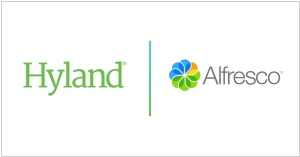
Hyland, a provider of content services, has entered into a definitive agreement to acquire Alfresco, a leading open-source ECM platform. Founded in 2005 by John Newton (co-founder of Documentum) and John Powell (former COO of Business Objects), Alfresco has established itself as a prominent player in the open-source ECM space. Based in Boston, Alfresco specializes in developing a cloud-native digital business platform that offers content services solutions to connect, manage, and safeguard critical information for organizations. Following the completion of the transaction, the entire Alfresco business is expected to be integrated into Hyland Software, Inc. This acquisition aligns with Hyland's vision of becoming a global leader in content services, expanding its presence worldwide and welcoming additional customers, partners, and highly experienced employees. Incorporating Alfresco's solutions enriches Hyland's portfolio of content services offerings and opens up new avenues for collaboration with the open-source community, driving product innovation.
2018. SharePoint gets organization-wide news and content targeting
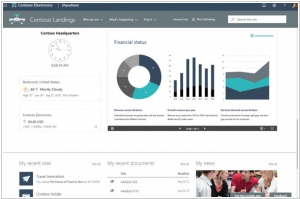
Microsoft has recently announced several enhancements for SharePoint and Office 365 sites, bringing new capabilities and functionalities. Among the notable updates is the introduction of a designated communication site that serves as the official news portal for the organization. This allows news posted on the portal to be easily identified with a special indicator, ensuring clear visibility on both mobile devices and the SharePoint home page. Additionally, a new feature enables the targeting of content to specific audiences based on their Active Directory (AD) Group membership, including dynamic groups. Moreover, SharePoint sites now have the ability to create mega-menus for navigation, facilitating improved user experiences and seamless site exploration. These advancements aim to enhance communication, personalization, and navigation within SharePoint and Office 365 sites.
2017. SharePoint 2016 finally added SharePoint Framework Support
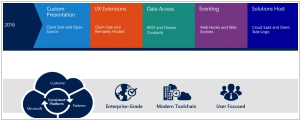
Microsoft's objective in launching SharePoint Framework into general availability in February was to attract a wider pool of developers to the SharePoint ecosystem. Now, with the introduction of SharePoint Feature Pack 2 (FP2), the company extends Framework support to users of SharePoint 2016. Framework serves as a page and web part model, offering comprehensive assistance for client-side SharePoint development, seamless integration with SharePoint data, and compatibility with open source tools. This release simplifies the process for SharePoint 2016 users and third-party developers to construct solutions centered around SharePoint.
2017. SharePoint Framework is generally available

Microsoft has introduced the SharePoint Framework, empowering developers and administrators to construct and deploy components that are utilized by Office 365 users within their production environments. This advancement entails leveraging web technologies to create agile, responsive, and notably mobile-friendly applications on SharePoint. While SharePoint has served as an application and development platform for a considerable duration, the release of the Framework marks a significant stride in enhancing the developer experience. Historically described as unwieldy and challenging, the SharePoint Framework introduces improvements that address these concerns.
2016. Alfresco is available as a managed service on AWS
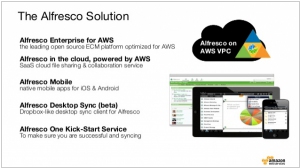
Alfresco, a renowned provider of enterprise content management (ECM) and business process management (BPM) software, has recently unveiled the early release of its platform as a managed service, now hosted on Amazon Web Services (AWS). This development enables users to conveniently access the platform as a single-tenant managed service within an AWS Virtual Private Cloud (VPC) environment. Furthermore, Alfresco is taking steps to streamline cloud deployment for customers who self-manage their AWS infrastructure, making it more accessible and hassle-free.
2016. Microsoft connects SharePoint Team Sites to Office 365 Groups
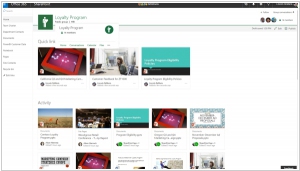
Microsoft is rolling out the integration of SharePoint and Office 365 team sites, introducing a new feature that enables the creation of interconnected SharePoint Online team sites within seconds. This integration simplifies the process as follows: Whenever an Office 365 Group is created, the service automatically generates a SharePoint team site. The appearance of the site can be customized by the team site administrator and includes various elements such as pages, lists, libraries, and team news. SharePoint team sites serve as collaborative spaces where teams can effectively communicate, share documents, and collaborate on projects. They are user-friendly and facilitate the creation of dedicated sites for each project undertaken by the team. Moreover, team sites are easily accessible across multiple devices, making them suitable for mobile workers as well.
2016. Microsoft released SharePoint for Android
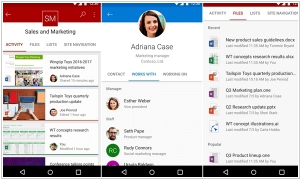
Despite Microsoft's withdrawal from actively competing in the mobile OS market for the past two years, the company has been notably sluggish in releasing Android apps. However, Microsoft has finally unveiled its SharePoint mobile client specifically designed for Android smartphones and tablets. This application offers users the ability to collaborate within team sites and access documents stored in SharePoint across various categories, including Sites, Links, and People. To utilize the SharePoint app, organizations must have an Office 365 subscription that includes SharePoint Online. Support for SharePoint Server 2013 and SharePoint 2016 will be incorporated at a later stage. Earlier this year, Microsoft released SharePoint mobile apps for iOS and Windows Phone, with the latter app still being in the preview stage.
2016. Microsoft brings SharePoint to iOS
Microsoft has introduced a new mobile application for SharePoint users, designed to provide access to a company's SharePoint-powered intranet portal and its content on smartphones and tablets. Initially available on iOS devices such as iPhones and iPads, the app will be extended to Android and Windows platforms by the end of the year, according to Microsoft. The app is compatible with both SharePoint Online in Office 365 and SharePoint Server 2013 or 2016 in on-premises or hybrid environments. It includes a Sites tab that enables users to visit their frequently accessed SharePoint sites, view recent activity, access files, lists, pages, and other content on those sites. Additionally, the app integrates with other Microsoft mobile applications, allowing seamless transitions between apps. For instance, clicking on an Office document in the SharePoint app will open the corresponding Office mobile app, while viewing a document library on a team site will redirect users to the OneDrive mobile app for iOS.
2016. SharePoint adds new document libraries
Now that SharePoint 2016 has arrived, Microsoft is gradually introducing SharePoint Document Libraries to its commercial Office 365 subscribers through SharePoint Online. These new document libraries represent a more user-friendly approach to SharePoint, allowing users to conveniently access documents, modify document metadata, and prioritize content within the document library. This development is significant as it addresses longstanding criticisms of earlier versions of SharePoint regarding usability challenges. Throughout the extensive lead-up to the release of SharePoint 2016, Microsoft pledged its commitment to enhancing the user experience.
2016. Alfresco integrates its ECM and BPM
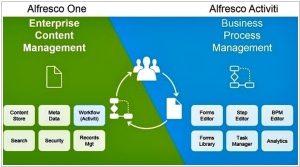
Alfresco has unveiled a significant integration between its enterprise content management (ECM) platform, Alfresco One, and its Business Process Management (BPM) platform, Activiti. This marks the culmination of years of concerted efforts to bring the two platforms closer together, effectively enhancing the functionality of both in managing business content and processes. With this announcement, Alfresco enters the competitive Process and Collaboration Management (PCM) market, providing enterprises with a comprehensive suite of offerings encompassing content management and content-driven processes. The integration seamlessly combines BPM, ECM, records management, and includes integrations with capture and e-signature vendors, delivering a holistic solution for enterprises in need of robust process and collaboration management capabilities.

